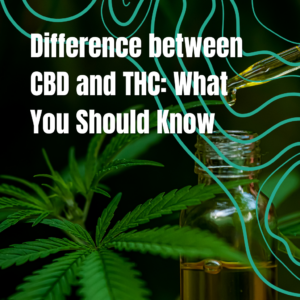

All You Have to Know About CBG
Cannabigerol, or CBG, is a cannabinoid found in the cannabis plant that plays a key role in the development of other cannabinoids. CBG is often called the “mother of all cannabinoids” because it is the chemical precursor to many other compounds in cannabis. Unlike THC, CBG does not produce a high and is gaining attention for its potential health benefits.

CBG interacts with the body’s endocannabinoid system, which helps regulate many functions like mood, pain, and inflammation. Researchers are exploring how CBG might support conditions such as inflammation, anxiety, and some neurological disorders. Its unique qualities make CBG a focus of new products and treatments that blend cannabinoids for greater effect.
As interest grows, understanding how CBG is made, used, and regulated becomes more important. People can find CBG in various forms, including oils, capsules, and topicals, often combined with other cannabinoids to enhance its effects. Exploring CBG offers insight into how this cannabinoid might fit into wellness and medical options.
Key Takeaways
- CBG is the chemical base for other cannabinoids in cannabis.
- It affects the body’s natural regulation system linked to health.
- CBG is available in many product types and may work well with other cannabinoids.
What Is CBG?
Cannabigerol (CBG) is a key compound found in the cannabis plant. It is a type of cannabinoid, like the more well-known THC and CBD. CBG plays a crucial role in how other cannabinoids are formed and offers unique qualities compared to its counterparts.
Cannabigerol vs Other Cannabinoids
CBG is different from other cannabinoids because it does not cause a high. Unlike THC, CBG is non-psychoactive. It interacts with the body’s endocannabinoid system but usually with less intensity than THC or CBD.
CBG is often called the “mother of all cannabinoids” because it is the chemical precursor to many other cannabinoids. During the plant’s growth, CBG transforms into THC, CBD, and others through natural processes.
This distinguishes it from cannabinoids that appear later during the plant’s life. CBG typically exists in smaller amounts, making it less common in most cannabis products compared to THC and CBD.
The Role of CBG in the Cannabis Plant
CBG starts as cannabigerolic acid (CBGA) in the cannabis plant. This acid form is the source from which other cannabinoids are made. The plant enzymes convert CBGA into THCA, CBDA, or CBCA, which then become THC, CBD, and CBC when heated or aged.
Thus, CBG is essential for the plant’s chemical makeup. It acts like a building block, giving rise to many important cannabinoids through this chemical process.
Because much of the CBGA converts, only small amounts of CBG remain in the mature plant. Breeders are now working on growing cannabis strains with higher CBG levels to explore its potential benefits.
CBG and the Endocannabinoid System
CBG interacts with the body’s endocannabinoid system, which helps regulate many functions like mood, pain, and appetite. It affects different cannabinoid receptors in unique ways. This interaction is distinct from other well-known cannabinoids like CBD and THC.
Interaction With CB1 and CB2 Receptors
CBG binds weakly to CB1 receptors, which are mainly in the brain and influence mood, memory, and pain. Unlike THC, CBG does not strongly activate these receptors, so it does not cause the psychoactive effects typical of THC.
CBG has a stronger effect on CB2 receptors, found mostly in the immune system and peripheral tissues. It can influence inflammation and immune response by modulating CB2 activity. This makes CBG potentially helpful in conditions involving immune regulation and inflammation.
In addition to CB1 and CB2, CBG may also interact with other channels such as TRP channels, but its primary impacts come from its actions on these two cannabinoid receptors.
Comparison to CBD and THC
Like CBD (cannabidiol), CBG is non-psychoactive, meaning it does not cause a high. Both cannabinoids influence the endocannabinoid system but in different ways.
While CBD oil is widely known for reducing anxiety and inflammation by indirectly affecting CB1 and CB2 receptors, CBG acts more directly on CB2 receptors.
In contrast, THC (tetrahydrocannabinol) binds strongly to CB1 receptors and causes psychoactive effects. CBG’s lack of strong CB1 activation sets it apart from THC and aligns it more closely with CBD in terms of not causing intoxication.
| Compound | Psychoactive | Primary Receptors | Main Effects |
|---|---|---|---|
| CBG | No | CB2 > CB1 | Anti-inflammatory, immune support |
| CBD | No | Indirect CB1 & CB2 | Anxiety relief, anti-inflammatory |
| THC | Yes | CB1 > CB2 | Psychoactive, pain relief |
Health and Therapeutic Benefits of CBG
CBG offers various benefits related to inflammation, pain, the nervous system, and mental health. It affects several body systems, making it a compound of interest for health and wellness. These effects contribute to its potential use in managing certain symptoms and conditions.
Anti-Inflammatory Effects
CBG has strong anti-inflammatory properties. It helps reduce inflammation by interacting with the body’s endocannabinoid system. This system plays a key role in controlling immune response and inflammation.
Studies suggest CBG can lower neuroinflammation, which is inflammation in the brain and nervous system. This is important because neuroinflammation is linked to diseases like arthritis and neurodegenerative conditions. By reducing inflammation, CBG may help support overall health and reduce symptoms tied to chronic inflammatory states.
CBG for Pain Management
CBG shows promise as an analgesic, meaning it helps relieve pain. It works by targeting specific receptors related to pain perception in the nervous system.
In various studies, CBG reduced pain and discomfort in models of inflammatory and neuropathic pain. This makes it useful for managing health issues that cause long-term pain. Its pain-relieving effect is linked to its ability to reduce both inflammation and nerve pain signals.
Neuroprotective and Analgesic Properties
CBG also acts as a neuroprotective agent. It helps protect nerve cells from damage caused by diseases or injury. This could benefit people with conditions like multiple sclerosis or Parkinson’s disease.
Apart from neuroprotection, CBG has analgesic properties that assist with both acute and chronic pain. It may support energy and reduce fatigue by helping the nervous system work better. This dual effect can enhance wellness by improving physical comfort and brain health.
Impact on Anxiety and Mood Disorders
CBG influences certain brain chemicals like GABA, which helps regulate mood and anxiety. Increasing GABA activity can calm the nervous system and promote relaxation.
People using CBG often report reduced anxiety and improved sleep. These effects make it a potential option for managing mood disorders and stress-related symptoms. It may help balance mood without severe side effects often found in other treatments.
For more detail about CBG’s health effects, see this article on its benefits and risks.
The Entourage Effect and CBG Synergy

CBG works best when combined with other cannabis compounds, creating a stronger overall effect. These interactions influence how the body responds to cannabinoids like CBC and CBN, enhancing potential benefits. The way these compounds are grouped in products also matters for effectiveness.
Interactions With CBC and CBN
CBG interacts closely with CBC (cannabichromene) and CBN (cannabinol) to boost the entourage effect. Together, these cannabinoids can target different receptors and pathways in the body. This combination may increase relief compared to when each is used alone.
For example, CBC is known for its anti-inflammatory properties, and CBN may have mild sedative effects. When paired with CBG, it can enhance these benefits. This blending can result in better support for anxiety, pain, and sleep issues.
Research shows these cannabinoids reduce anxiety and inflammation more effectively as a group. The synergy means less need for high doses of any single cannabinoid, potentially lowering side effects.
Full-Spectrum and Broad-Spectrum Products
Full-spectrum products contain all natural cannabinoids found in the cannabis plant, including CBG, CBD, CBC, and CBN. This setup gives the most complete entourage effect because all compounds work together.
Broad-spectrum products remove THC but keep other cannabinoids and terpenes intact. These are good for those who want synergy without THC’s psychoactive effects.
In both types, CBG plays a key role in enhancing the activity of other cannabinoids like CBD and cannabinol. Product labels often show cannabinoid profiles, which can help buyers choose based on desired effects.
Using full-spectrum or broad-spectrum CBD products supports the natural balance of cannabinoids, improving how the body absorbs and responds to them. This balance is crucial to unlocking the full power of the entourage effect.
Many users find better results with these products than isolated CBD or CBG alone. For more details on the synergy effects of CBD and CBG, see this Hemp King Blog.
Types of CBG Oils and Products
CBG products come in several types, with CBG oils being the most common. These oils often combine CBG with carrier oils like hemp seed oil or MCT oil for easier absorption.
Other popular forms include:
- CBG capsules for measured doses
- CBG tinctures for quick sublingual use
- CBG topicals like creams and balms aimed at localized relief
- CBG flower for those who prefer raw plant use
Some products blend CBG with CBD to provide a broader range of effects. It’s essential to check the concentration on labels, as CBG is usually found in smaller amounts than CBD in cannabis plants.
How to Use CBG Oil
CBG oil is commonly used by placing a few drops under the tongue. This sublingual method allows for quicker absorption into the bloodstream. Users are advised to hold the oil under the tongue for about 30 to 60 seconds for maximum effect.
Dosage varies, but starting low and gradually increasing is recommended. Some also add CBG oil to food or beverages, although this delays onset. Capsules offer controlled doses, while topicals are applied directly to the skin.
Consistent daily use may be needed to notice effects. Consulting with a healthcare provider familiar with cannabinoids is advised, especially if used alongside other medications.
Safety, Side Effects, and Non-Psychotropic Nature
CBG is non-psychotropic, which means it does not cause a “high.” This is a key difference from THC, the psychoactive component in cannabis.
Side effects are generally mild and rare but may include dry mouth, dizziness, or stomach upset. There is limited research on long-term safety, so users should monitor their reactions carefully.
CBG products must follow legal guidelines to ensure they contain less than 0.3% THC in most regions. This helps reduce the risk of unwanted psychoactive effects. When sourced from reputable suppliers, CBG oils and products are considered safe for most people.
Cannabinoids keep being studied and new discoveries are made so if this article was interesting don´t forget to share and remember to visit us in Pasadena, CA. Stay lifted.


